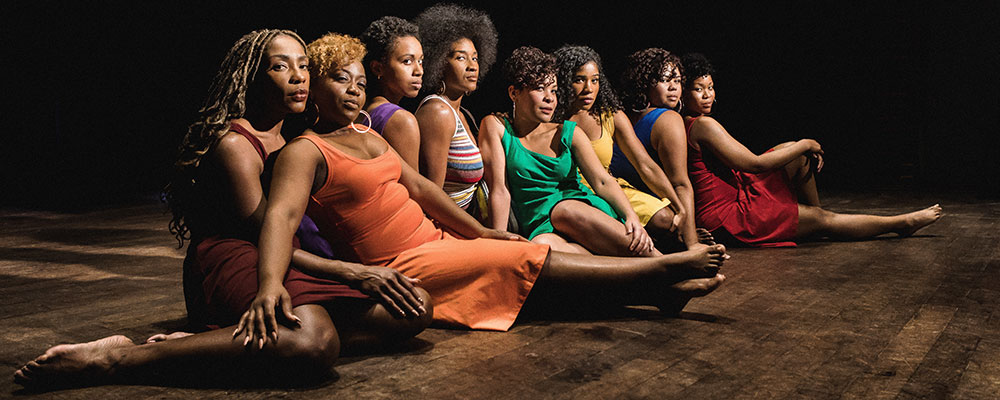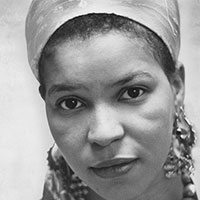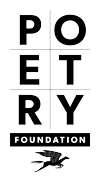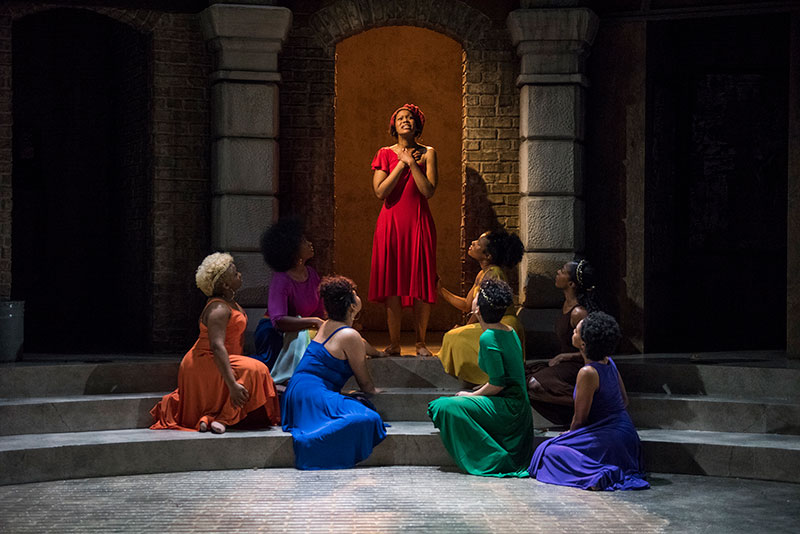
SOLD OUT!
For Colored Girls
WHO HAVE CONSIDERED SUICIDE / WHEN THE RAINBOW IS ENUF
by Ntozake Shange
directed by Seret Scott
Mar 14, 2019 — Apr 14, 2019
“Director Seret Scott, who was part of the original Broadway cast, infuses the script with vitality, prescience, and universality… It is impossible to overstate how talented this entire cast is.” —Sheri Flanders, Chicago Reader, Highly Recommended
“The entire cast feels carefully curated. Rich inner lives reside in a public space.” —Chris Jones, Chicago Tribune, ★★★★
A sisterhood of eight women tell their stories through dramatic prose poetry, music, and movement. Told in vivid language, their experiences resound with fearless beauty and unity, despite exposing the unending challenges and oppressions that women of color face every day. Director Seret Scott (Native Son) returns to playwright Ntozake Shange‘s cherished work after performing as a member of the original Broadway cast from 1976-1978. She will inspire new audiences with this series of stories that still resonate profoundly forty years later.

Deepen your experience by attending one of our curated, community-focused events. Learn more →
Estimated running time: 90 minutes, presented without intermission.
|
For Colored Girls is sponsored by |
Photo of Patrese McClain, Alexis J. Roston, Leah Casey, Melody Angel, Angelica Katie, Melanie Brezill, Melissa DuPrey, and AnJi White (Joe Mazza).
Artistic Team
-
DirectorSeret Scott
-
Scenic DesignCourtney O’Neill
-
Costume DesignSamantha C. Jones
-
Lighting DesignPaul Toben
-
Sound DesignAndré Pluess
-
DramaturgGabrielle Randle-Bent
-
Associate DirectorSydney Chatman
Cast
-
Lady in RedAnJi White
-
Lady in BlueMelissa DuPrey
-
Lady in YellowMelanie Brezill
-
LyricMelody Angel
-
Lady in BrownPatrese D. McClain
-
Lady in GreenAngelica Katie
-
Lady in OrangeAlexis J. Roston
-
Lady in PurpleLeah Casey
Videos
Photos
Articles and Interviews

Related Events
-
Spotlight Reading: Boogie Woogie Nights
Monday, April 8: A reading of Ntozake Shange's choreopoem about one night of dreams and memories from a young, African American woman.
-
beyond the rainbow: Court Community Conversations
A series of curated, community-focused events allowing participants to engage with the themes in Shange’s work in a variety of ways.

